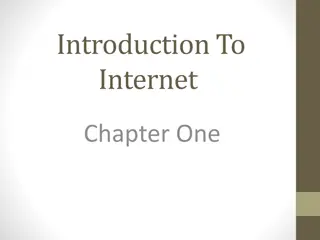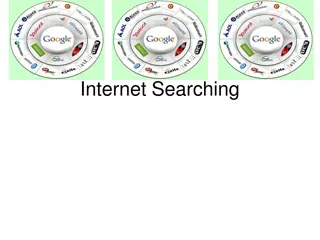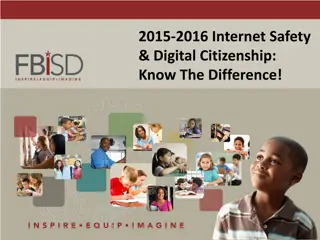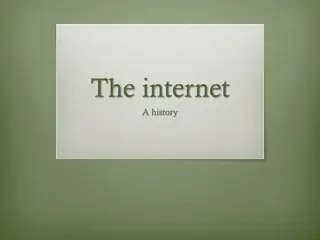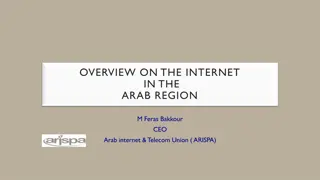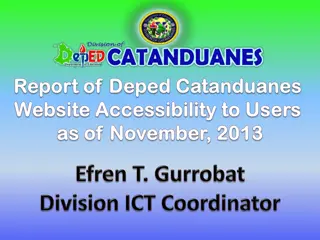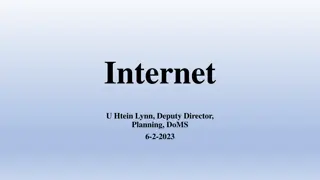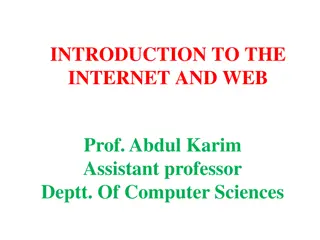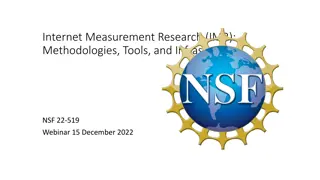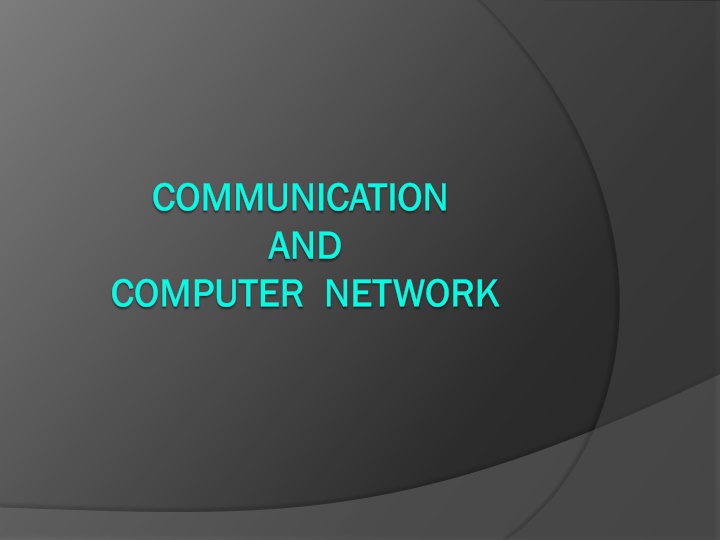
Computer Networks: Communication and Connectivity Explained
Explore the world of computer networks, from Local Area Networks (LAN) to Wide Area Networks (WAN), to understand how data is shared between devices. Learn about client/server networks, peer-to-peer connections, network hubs, and the evolution of the Internet from ARPANET. Discover the types of networks, network layout, and the significance of nodes and clients in building a connected digital environment.
Download Presentation

Please find below an Image/Link to download the presentation.
The content on the website is provided AS IS for your information and personal use only. It may not be sold, licensed, or shared on other websites without obtaining consent from the author. If you encounter any issues during the download, it is possible that the publisher has removed the file from their server.
You are allowed to download the files provided on this website for personal or commercial use, subject to the condition that they are used lawfully. All files are the property of their respective owners.
The content on the website is provided AS IS for your information and personal use only. It may not be sold, licensed, or shared on other websites without obtaining consent from the author.
E N D
Presentation Transcript
COMMUNICATION COMMUNICATION AND AND COMPUTER NETWORK COMPUTER NETWORK
Computer network A network consists of multiple computers connected to each other to share data and resources.
Computer network Network types : 1. Local Area Network (LAN). 2. Wide Area Network (WAN ).
1- Local Area Network -LAN When the network computers are located in the same general area, such as the same building or a department, it is called a Local Area Network
1- Local Area Network -LAN Client / Server Network : There is a central computer called a server which stored all Data and software programs so that other computers (Client) can use it . Peer-To-Peer Network : Individual computers share data directly with others computers , does not use a server. It is less expensive than Client / Server Network .
Clients and Nodes Clients computers on a network not being used as servers . Nodes any devices attached to the network through a hub .
A Typical Network Layout In a typical network layout, the client or user computers are connected to a hub, which is also connected to the server. Hub Data and programs are stored on the server. All clients can access data and pro- grams through the server and can access the printer attached to the server. Client or user computers
2- Wide Area Network -WAN This network spread over a wider region such as a city, state, or country. Many WAN use satellite communication and telephone network . Bank ATM . Internet .
graphical representation of the Internet
The Internet The Internet evolved from a government research project in the late 1960 s called ARPANET that enabled the military and scientists around the world to share information. Today it is the largest network in the world. It is used daily by millions of computer users. It has become a critical and valuable business tool used by businesses of all sizes.
Intranets It is a network for the exclusive use of a business or university and contains company information. information on the network is not accessible to outside users . Advantage : Reliability and security . internal controls access .
Extranets Allow outside users to access a company s Intranet - internal information system . Access is tightly controlled and its reserved for supplier and customers .
EXPANSION OF NETWORK EXPANSION OF NETWORK o Hub : a distributor that has a lot of ports which connect computers . o Switchers : like a hup , but it transmits packet to its destination . o Routers : choose the best path to transmit the packet . o Bridge : use to connect two similar LANs. o Repeaters : repeats signals that travels via long distances .
Transmission Media Transmission Media : are used to send data over the network . 1- Wired media : Twisted pairs . Coaxial . Fiber optics .
Coaxial Twisted pairs Fiber optics
Transmission Media Transmission Media : are used to send data over the network . 2- Wireless media : 1. Radio waves . 2. Microwaves . 3. Satellite .
Electronic Communication Has made the Internet, e-mail, online shopping, and other processes possible. There are four components of electronic communication: Sender: The computer sending a message. Receiver: The computer receiving the message. Channel: The media that carries the message. Protocol: The rules that govern the processing of a message between computers. 1. 2. 3. 4.
Electronic Communication Components Computer A sends a message to Computer B. The message travels via the channel, following the rules defined by the protocol being used so that each computer can understand the message.
Examples of Electronic Communications Examples of Electronic Communications
Examples of Electronic Communications Examples of Electronic Communications
Computers in Our Future Will be more powerful and less expensive . Almost every type of job will somehow involve a computer . More people will work full-time or part-time from home . Wireless and mobile devices are becoming the norm.



